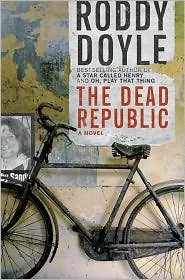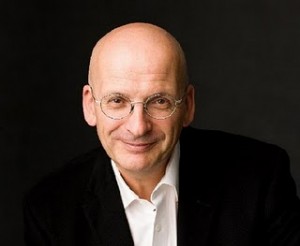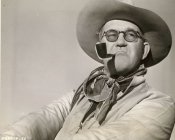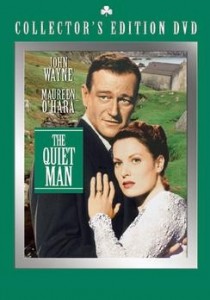“We’re in it for the long haul, and we want men who know what that means. We might be old men or even old dead men before the British realize that the time has come to go. Old empires are stupid. You know that.”
Thirty-five ye ars after Henry Smart became one of the heroes of the Easter Rising in Dublin in 1916, the most significant rebellion of the Irish against British rule in over a hundred years, Henry is in Hollywood, where he is an “IRA consultant” to director John Ford, a second-generation Irishman from Maine who plans to make a film about Henry’s life. The making of this film and its aftermath become a major focus of this final novel in the “The Last Round-Up” trilogy by Roddy Doyle, who had intended the trilogy to reflect Ireland’s history from its independence to the present day. A STAR CALLED HENRY, the first of the series, establishes Henry’s background as a poverty-stricken child and the reasons for his willingness to put his life on the line in the General Post Office takeover in 1916, when he was only fourteen, and follows him through the War for Independence from 1919 – 1922.
ars after Henry Smart became one of the heroes of the Easter Rising in Dublin in 1916, the most significant rebellion of the Irish against British rule in over a hundred years, Henry is in Hollywood, where he is an “IRA consultant” to director John Ford, a second-generation Irishman from Maine who plans to make a film about Henry’s life. The making of this film and its aftermath become a major focus of this final novel in the “The Last Round-Up” trilogy by Roddy Doyle, who had intended the trilogy to reflect Ireland’s history from its independence to the present day. A STAR CALLED HENRY, the first of the series, establishes Henry’s background as a poverty-stricken child and the reasons for his willingness to put his life on the line in the General Post Office takeover in 1916, when he was only fourteen, and follows him through the War for Independence from 1919 – 1922.

The second book of the trilogy, OH, PLAY THAT THING, takes Henry, on the lam from mobsters in Ireland in 1922, to Chicago, where he meets up with jazz musician Louis Armstrong—and, surprisingly, Henry’s estranged wife, Miss O’Shea (her first name unknown), who is working at a home which Henry and Louis have decided to rob. Eventually, Henry ends up in Hollywood. Those who may be wondering how all this action fits together, thematically, are not alone. Even those who have loved the first novel, with its vibrant depictions of Padraic Pearse and James Connolly, and the intense action in the Dublin Post Office at the beginning of the revolution, have often had problems with the change of scene and focus in the meandering second novel.
This third novel, though it eventually refocuses on the direction Ireland is taking, is also one which covers eight decades as Henry Stark leaves Hollywood and returns to Ireland, attempting to live a normal life under Irish self-rule. At the outset, Henry is discovered near death in Death Valley by Henry Fonda, who, with director John Ford is filming “My Darling Clementine,” an ironic tribute to the participants in the shootout at the OK Corral. It is then that John Ford begins talks with Henry about making a film of Henry’s life—“The Quiet Man.” Ford, who regards himself as an Irishman, though he  is from Maine, wants to celebrate Ireland’s beauty by removing all references to the War for Independence and the IRA. “I couldn’t have an Irishman shoot an Irishman,” Ford says. That doesn’t happen in Ireland. No one gets shot in the back. No one gets shot at all”—at least in the Ireland which Ford thinks the public will pay to see.
is from Maine, wants to celebrate Ireland’s beauty by removing all references to the War for Independence and the IRA. “I couldn’t have an Irishman shoot an Irishman,” Ford says. That doesn’t happen in Ireland. No one gets shot in the back. No one gets shot at all”—at least in the Ireland which Ford thinks the public will pay to see.
In Part II, Henry is back in Ireland, working as a caretaker at a school for underprivileged boys. Throughout this section, Henry, in his late sixties, lives a quiet life, until he is eventually “called” once again by the IRA. By his late seventies, he has had several encounters with a woman he believes to be his wife, but as she is in her early nineties, it is difficult for them to recognize each other. For Henry, “[Ireland] was [now] worse than it had been when [he] was young…The country was already dead.” Margaret Thatcher, the Iron Lady, “had woken seven hundred years of racial hatred.”

Though the dialogue is, as always, bright and lively, the novel is structurally confused, the emotional triumph of the Easter Rising from the first novel lost, by this time, in a Hollywoodized version of reality, with John Wayne and Maureen O’Hara cavorting in a gorgeous countryside which Hollywood regards as the “real” Ireland. Doyle attempts to bring the novel back to its roots in revolution by reconnecting Henry Smart with the Provos and the disastrous bombings of Dublin by the Ulster Defense Force in 1974, then bringing it further up to date with the elections held in 1980, as imprisoned republicans, like Bobby Sands, confined to Long Kesh, go on a hunger strike even as they are being elected to the Dail.
Those who are unfamiliar with the preceding two novels will have a difficult time understanding who the characters are and what their backgrounds entail, and as the action moves back and forth in time, even someone familiar with the trilogy will be hard pressed to figure out what is happening. Though the author is showing that the movement for a republic is dead by the time it becomes a Hollywood theme, the change from transformative national events to a countrified and artificially beautiful picture of Ireland which will “sell” movie tickets is a depressing denouement to the trilogy. The lives of the Irish revolutionaries have become lost in the scenery, as Henry Smart and his legacy go out, not with a bang but a whimper.
ALSO reviewed here: Doyle’s A STAR CALLED HENRY, THE GUTS, SMILE, LOVE, LIFE WITHOUT CHILDREN
Photos: The author’s photo appears here: http://jaiarjun.blogspot.com
The photo of John Ford is here: www.starpulse.com
“The Quiet Man” poster is here: http://www.examiner.com
To see the video trailer for The Quiet Man, click here. Times have changed! http://vids.myspace.com
